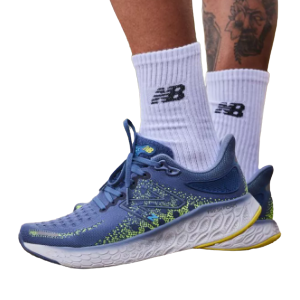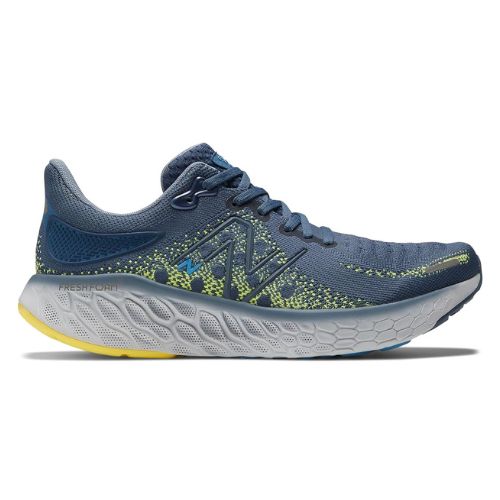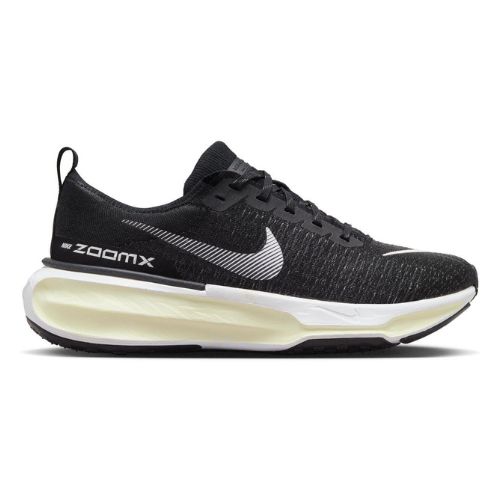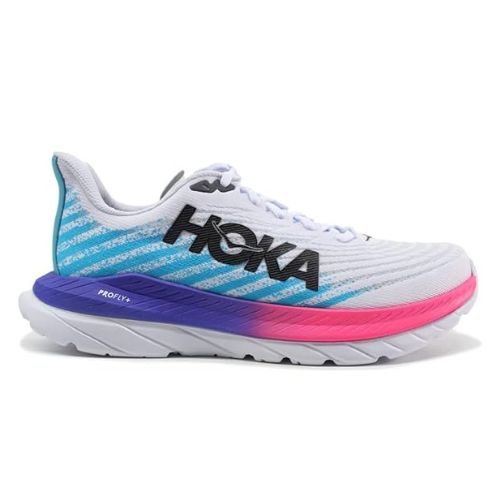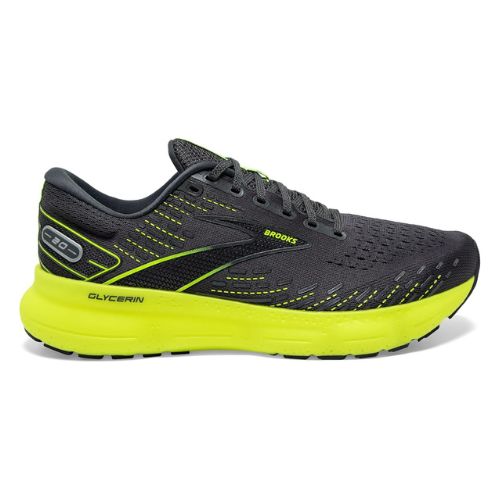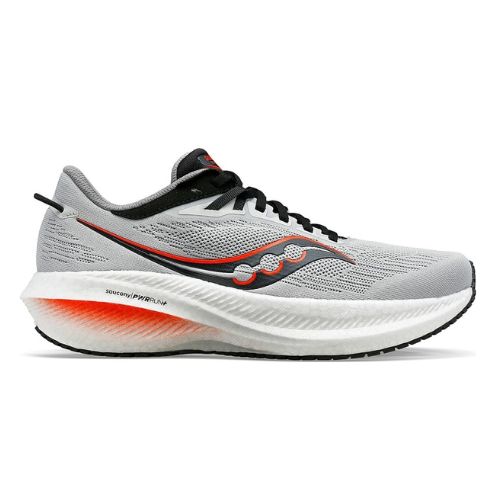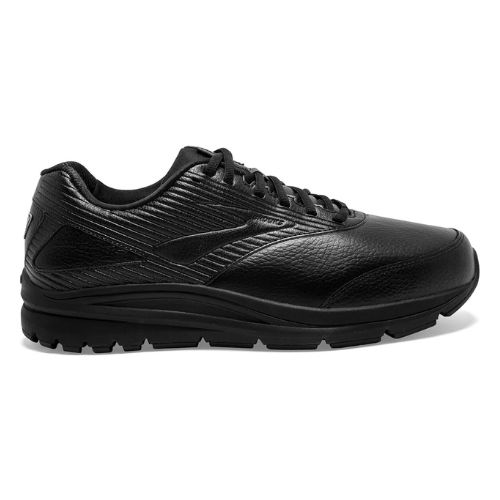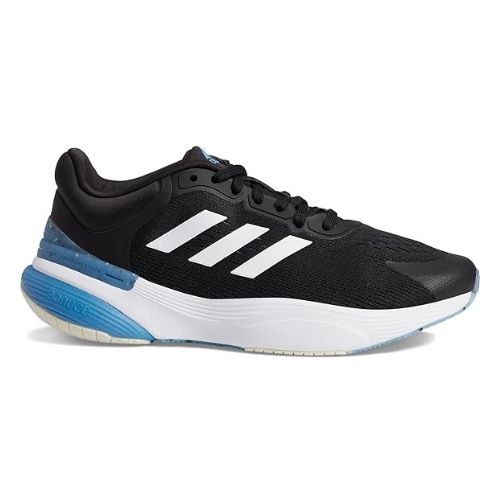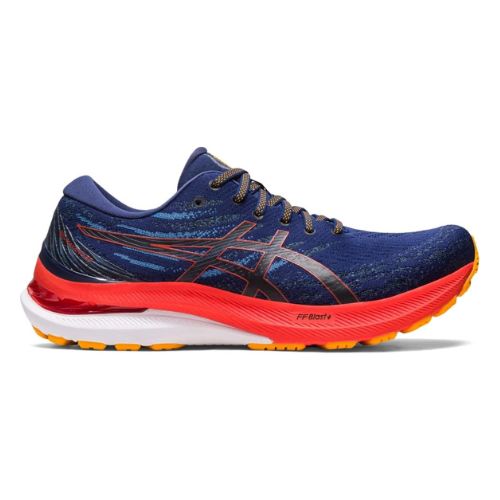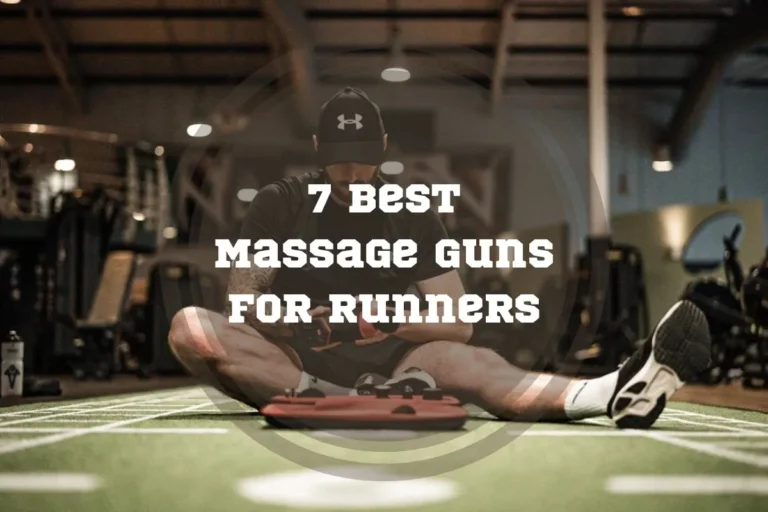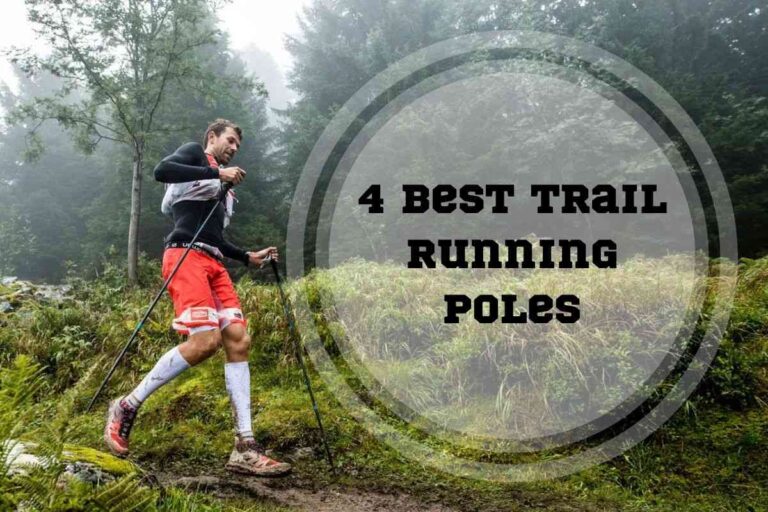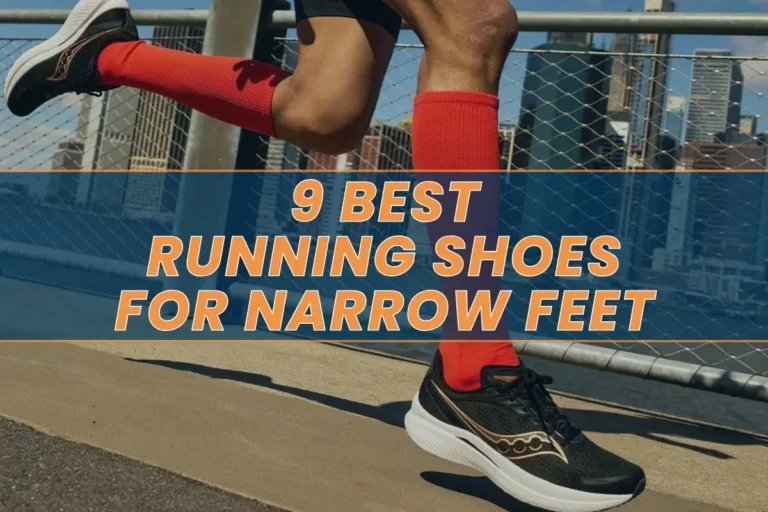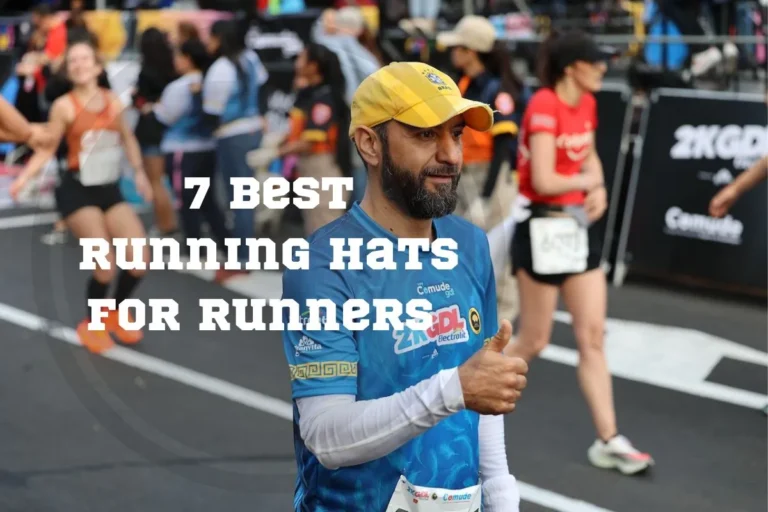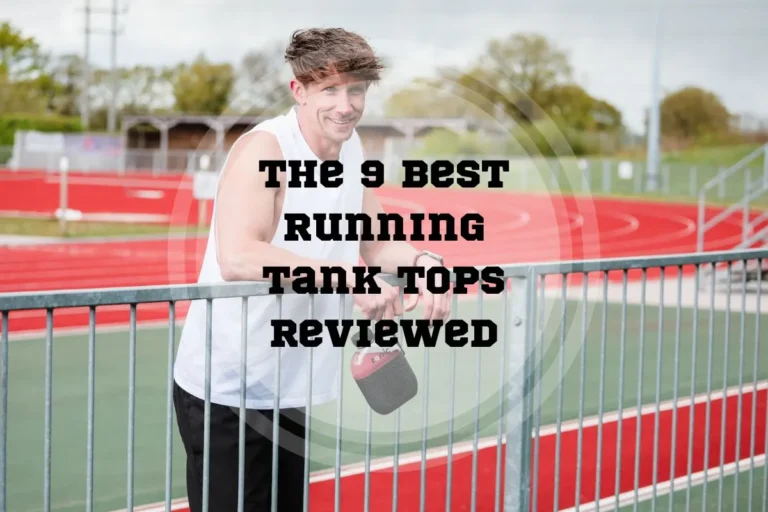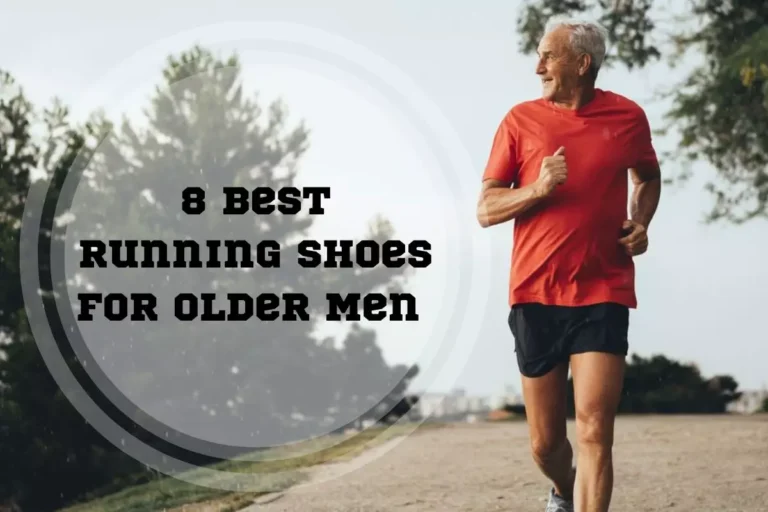8 Best Running Shoes for Haglund’s Deformity in 2025
The right shoes are very important for running, but finding them can be a difficult task if you’re dealing with a medical condition. That’s why we’ll be focusing on the best running shoes for Haglund’s deformity – to let you know how you can make your running experience comfortable and painless.
In a HURRY? Skip to Our Pick
This Men’s Running Shoe New Balance Fresh Foam X 1080 V12, is expertly crafted for the perfect blend of comfort and performance. Featuring Fresh Foam technology, it provides a responsive and cushioned ride, making it the ideal choice for runners seeking both style and substance.
Not all feet are the same, and we shouldn’t treat them as such. Haglund’s deformity needs special shoe features, like generous cushioning, precise arch support, and materials that won’t be irritating. A wrong choice could lead to painful sensations and even worsen your condition.
Additionally, the ideal running shoes need to absorb the shock with each step you take instead of transmitting it to your feet.
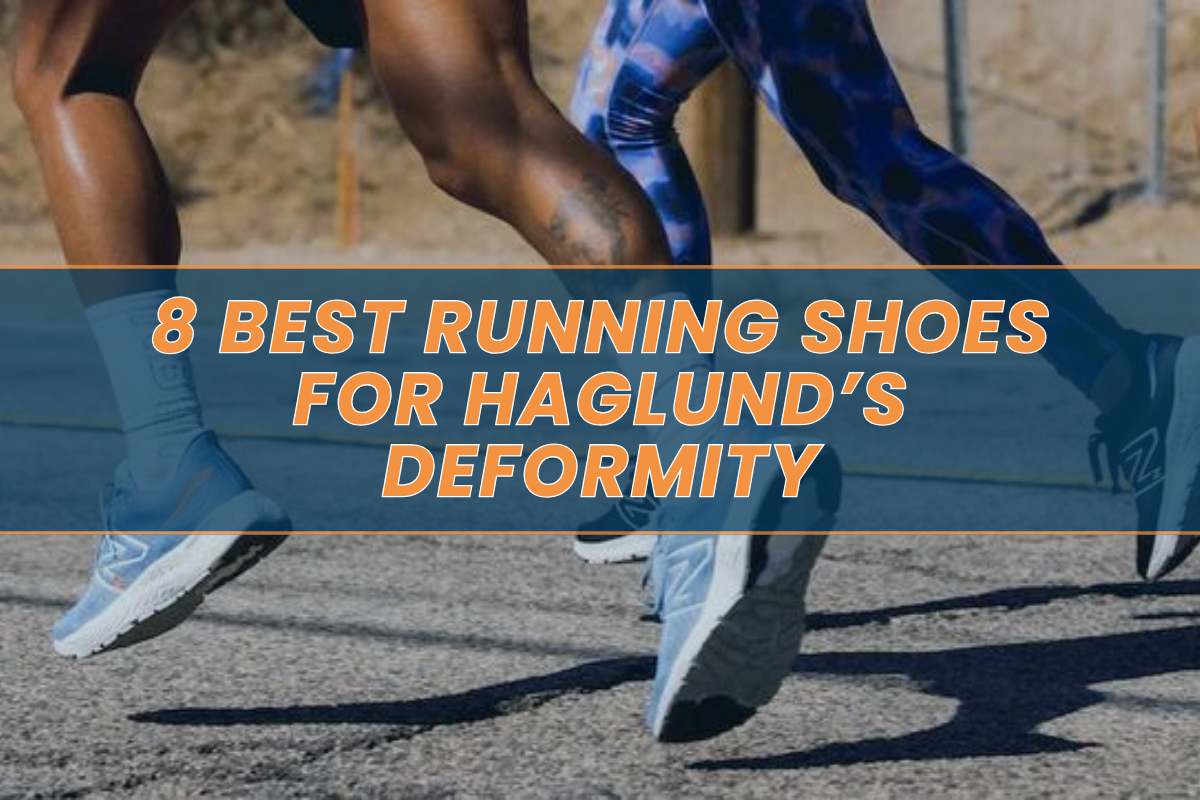
It may sound like you need to pay attention to way too many factors and finding the right shoes is close to impossible. Lucky for you, that’s not the case at all! There are 8 excellent pairs of running shoes, and all of them will work for Haglund’s deformity.
Let’s jump right in!
Top 8 Best Running Shoes For Haglund’s Deformity Reviewed
- New Balance Men’s Fresh Foam X 1080 V12 Running Shoe – Best Overall
- Nike Invincible 3
- Hoka Mach 5
- Brooks Glycerin 20
- Saucony Triumph 21
- Brooks Men’s Addiction Walker 2
- Adidas Men’s Response Super 3.0
- Asics Men’s Gel-kayano
To zero in on the best pair of running shoes for Haglund’s deformity, our team of pro runners, athletes, and trainers tested 19 pairs of shoes. They ranked them based on 7 critical features (comfort and fit, breathability, material, flexibility, cushioning, support and stability, and value for money) and also took stock of the online word-of-mouth. In the end, only 8 pairs of shoes had what it takes. We’ve invested 31 hours into this, so you’re bound to find something stellar. We’d love to see your tips, recommendations, and opinions in the comments section!
| Products | Expert score | Comfort and Fit | Breathability | Material | Flexibility | Cushioning | Support and stability | Value for money |
|---|---|---|---|---|---|---|---|---|
| NB Fresh Foam X 1080 V12 | 4.9 | 5.0 | 4.9 | 5.0 | 5.0 | 5.0 | 5.0 | 5.0 |
| Nike Invincible 3 | 4.9 | 5.0 | 4.9 | 4.7 | 4.9 | 5.0 | 5.0 | 5.0 |
| Hoka Mach 3 | 4.8 | 4.8 | 4.6 | 4.8 | 4.9 | 4.8 | 4.5 | 5.0 |
| Brooks Glycerin 20 | 4.7 | 4.7 | 4.8 | 4.8 | 4.6 | 4.8 | 4.8 | 4.8 |
| Saucony Triumph 21 | 4.6 | 4.6 | 4.6 | 4.6 | 4.7 | 4.8 | 4.8 | 4.5 |
| Brooks Addiction Walker 2 | 4.6 | 4.6 | 5.0 | 5.0 | 4.6 | 4.6 | 4.7 | 4.7 |
| Adidas Response Super 3.0 | 4.4 | 4. | 4.4 | 4.4 | 4.3 | 4.6 | 4.5 | 4.2 |
| Asics Gel-Kayano | 4.3 | 4.4 | 4.3 | 4.3 | 4.2 | 4.2 | 4.5 | 4.6 |
1. New Balance Men’s Fresh Foam X 1080 V12 Running Shoe
Best Overall
Running Shoe Fresh Foam X 1080 V12 Men’s New Balance
If your closet is overrun by running shoes and you want to declutter it and have just one pair – this is what you want. They’re not 100% perfect, of course, but as far as running shoes go, these are by far the best running shoes for Haglund’s deformity you can find currently.
Comfort and Fit:
Breathability:
Material:
Flexibility:
Cushioning:
Support and Stability:
Value for Money:
Expert Score:
The Fresh Foam X midsole is a lot more than just a fancy name – it really works! The cushioning on these shoes is exactly what you want, especially if you’re dealing with Haglund’s deformity. It significantly reduces the impact on heel area and minimizes the irritation to the Haglund’s bump. Another great thing is that New Balance cares about sustainability and the midsole contains 3% bio-based content derived from renewable sources. Good for you, New Balance!
The design is impressive, and you can tell they put a lot of thought and effort into it. The Hypoknit the upper is made of is amazing at being stretchy where it needs to be and supportive just where you want it. It doesn’t put pressure on any sensitive areas, but it’s still supportive.
The transitions are super smooth because of the extra foam in the wide areas, while the narrower points have increased flexibility. When you put these features together, you get running shoes that support the natural movement of your feet while being comfortable. There’s no pain and each step is gentle on the heel.
Your feet will be very happy in these shoes, and they’re definitely the best men’s shoes for Haglund’s deformity. Your wallet, however, may have a different opinion. They are pretty pricey, and not everyone wants to spend a lot on a pair of running shoes. Nevertheless, they’re definitely worth it!
- Material: Rubber sole, rubber outsole, foam midsole, Hypoknit upper
- Cushioning: Foam X
- Wide toe-boxes: Available
- Heel drop: 8 mm
- Weight: 0.6 lbs
- Size: 4-20
- Price/Quality: Pricey
- Recommended by athletes: - Luigi Babusci, Kartiko Yuwono - Prijosoesilo
Pros:
- Made with sustainability in mind
- Generous cushioning
- Supports the feet’s natural movement
- Stretchy upper
Cons:
- Pricey
- They get very hot after you’ve been running in them for a while
2. Nike Invincible 3
Who doesn’t know about Nike and their sneakers? Nike makes some of the most iconic footwear in the world; naturally, they have a pair of sneakers that will work for someone with Haglund’s deformity.
Comfort and Fit:
Breathability:
Material:
Flexibility:
Cushioning:
Support and Stability:
Value for Money:
Expert Score:
These shoes are a blend of comfort, support, cushioning, and responsiveness. They have a rubber sole for good traction, while the cushioning is next level and makes running as comfortable as possible. It significantly softens the impact and gives a very plush feeling. These shoes also support your natural stride because of the high support technology.
The cushioning is shaped like a rocker and placed intentionally to not only cradle your feet but also protect them from the effects of pronation. This means that you’re free to just focus on your run and don’t have to worry about potential discomfort or injuries. The unique rocker-shaped cushioning supports the natural stride while minimizing pressure on the heel, so they’re excellent if you’re dealing with Haglund’s deformity.
Nike’s ZoomX foam is very responsive and lightweight, so whether you want to run a little faster or with less effort, these shoes will deliver that extra boost to make every stride feel more dynamic and effortless. It distributes the impact away from the heel and reduces stress on the deformity.
The fit is another good aspect of these shoes. They run true to size, and the Flyknit upper makes them breathable. It would be great if the upper was a bit more substantial, because it feels a bit thin, which can be an issue when it comes to durability.
The heel clip is smaller and repositioned for a more precise fit, so your feet will be snug and secure, and the wide midsole gives a lot of stability. The foam stacks are tall and add a lot comfort-wise.
In short, these shoes are an excellent choice for anyone who wants to make running as comfortable as possible.
- Material: Flyknit upper, rubber sole
- Cushioning: Maximum cushioning
- Wide toe-boxes: No
- Stability: High support technology
- Heel drop: 9 mm
- Weight: 0.6 lbs
- Size: True to size
- Price/Quality: Expensive
- Recommended by athletes: Antonella Cottone, Matty Kruns
Pros:
- Very responsive ZoomX foam
- Cushioning that protects from the effects of pronation
- Smaller heel clip for a more precise fit
Cons:
- The motif in the soles attracts pebbles and debris
- The fabric on the upper is on the thinner side
3. Hoka Mach 5
The Mach 5 is all about speed and comfort. They’re designed for those who want to push the pace and experience an energetic bounce with every stride.
Comfort and Fit:
Breathability:
Material:
Flexibility:
Cushioning:
Support and Stability:
Value for Money:
Expert Score:
The mesh upper is breathable and has synthetic overlays, so it’s very comfortable and adapts to the contours of your foot. There’s no need for breaking them in, these Hoka sneakers are comfortable right out of the box. The redesigned creel mesh upper keeps the shoes from being heavy, which is exactly what you want if speed is your priority — you don’t want your shoes to weigh you down.
But what’s even better than the upper is the Profly+ foam midsole that has a stacked design and provides a snappier ride. These shoes were made for neutral runners that want the most comfort, whether on race day or on their daily runs. If you’re a Hoka fan already, you’ll be pleasantly surprised by how much lighter and more responsive these shoes feel.
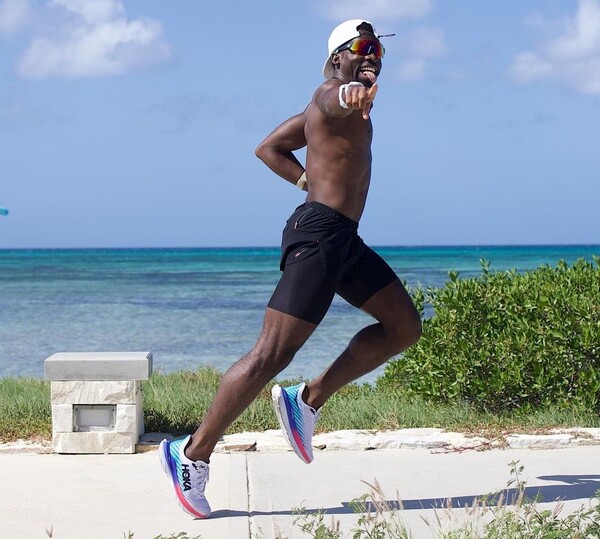
The heel collar has been updated and is now more secure. This is important if you’re trying to push your limits, because you’ll need your feet to stay securely in place. Another great thing that comes from the secure heel collar and snug fit is that the heel bump won’t get aggravated because your foot can’t move around unnecessarily.
Although they fit true to size, they’re a little bit narrow in the midsection and there’s no wide option to choose, so if you don’t like your shoes to fit a little bit tight, these are probably not for you. You could size up, but then you risk them being too big. Overall, either you’ll accept your feet being really snug in these or you’ll have to look elsewhere, but keep in mind that the general design makes these a great option for those who are trying to manage Haglund’s deformity.
- Material: Mesh upper, EVA midsole, rubber soles
- Cushioning: Foam-padded insole
- Wide toe-boxes: No
- Stability: Full-length EVA midsole for shock absorption and stability
- Heel drop: 5 mm
- Weight: 8.2 ounces
- Size: True to size
- Price/Quality: Good value for money
- Recommended by athletes: Drew Whitcomb, Michal Ištvánek, Johan Toriniere
Pros:
- Good for people who prioritize speed
- Updated heel collar keeps the feet in place
- Profly+ foam midsole gives a soft, bouncy feel
Cons:
- Tight midsection
- Not good for people who don’t like an elevated feel
4. Brooks Glycerin 20
The Glycerin 20 is 100% synthetic and have been redesigned to have the outsole and midsole work in harmony to provide a widened platform for smoother and easier transitions during running.
Comfort and Fit:
Breathability:
Material:
Flexibility:
Cushioning:
Support and Stability:
Value for Money:
Expert Score:
At first sight (and wear), the upper is phenomenal: plush, breathable, with a secure fit and soft feeling. The textile lining insole is comfortable and smooth and makes your feet feel great. However, the upper is just not durable enough, and a lot of people complain about the mesh on the toe box breaking open after a few months. Since these are on the pricier side, it’s not very practical to have to replace them a few times a year.
The great thing about the Glycerin 20 is that it has a lace-up closure that can be tailored perfectly to how wide or narrow your feet are, and the padded tongue and collar add a lot comfort-wise. Besides, the shoes are available in wide and narrow versions for an even better fit. The plush upper and tailored lace-up closure allow you to adjust the shoes to be comfortable and adjustable in case there’s any swelling or sensitivity in the heel area.
The best thing about these shoes is their support. It’s achieved through a nitrogen infusion process that finely tunes the softness with careful precision and without making the shoes heavy or non-responsive. There’s also a lot of colors to choose from, so you can always match your shoes to your outfit and make those OOTD Instagram photos perfect.
- Material: 100% synthetic
- Cushioning: DNA Loft v2
- Wide toe-boxes: Available
- Stability: Available in Support or Neutral option
- Heel drop: 10mm
- Weight: 9.1 ounces
- Size: true to size
- Price/Quality: expensive
- Recommended by athletes: Eva Llinàs, Lianne van der Linden
Pros:
- Innovative design for better support
- Available in Narrow and Wide options
- Lots of colors available
Cons:
- The mesh upper is not durable enough
- Pricey, especially since they don’t last for too long
5. Saucony Triumph 21
Saucony is known to be dedicated to performance and innovation, so you can always expect their shoes to have interesting features. The best thing about them is that these features are not gimmicks — they are functional and serve a purpose.
Comfort and Fit:
Breathability:
Material:
Flexibility:
Cushioning:
Support and Stability:
Value for Money:
Expert Score:
The PWRRUN+ cushioning is a dream come true. It’s in the midsole as well as the sockliner and gives a wonderful, soft, and fluffy feel. Each step in these shoes feels like a million bucks and you’ll have a really hard time finding cushioning that can beat this. Soft cushioning is one of the most important features to look for in shoes if you’re dealing with Haglund’s deformity because you want to minimize the impact on your heels as much as possible.
They have a new flat-knit upper that looks amazing but is also highly functional: it has a redesigned lacing system that makes the sneakers more comfortable and provides security. To add even more to the overall comfort, there’s the soft collar, new laces, and padded tongue.
Something a lot of people will be excited about is that these shoes are not only vegan but also eco-friendly and contain recycled materials. More and more brands are turning to vegan shoes and recycled materials, and that’s fantastic to see.
The outsole could use some reinforcement because it damages easily if you’re running on rough or uneven terrain. If you decide to get these shoes, keep in mind that it’s best to use them on a treadmill or concrete.
- Material: Synthetic upper, rubber sole
- Cushioning: PWRRUN+ cushioning
- Wide toe-boxes: Available
- Stability: Neutral
- Heel drop: 10mm
- Weight: 9.8 ounces
- Size: True to size
- Price/Quality: Good value for money
- Recommended by athletes: David Vandervliet, Nash Tantivit
Pros:
- Softest, most comfortable cushioning
- Redesigned lacing system makes the shoes more comfortable and secure
- Vegan
- Eco-friendly
Cons:
- Outsole is not very durable
- Laces are too long and need to be tucked in
6. Brooks Men’s Addiction Walker 2
Addiction Walker 2 Brooks Men’s
The Addiction Walker 2 is for people that need the highest amount of support possible. These shoes are sleek, insanely durable, and leather-made. They come at a reasonable price for so many premium qualities.
Comfort and Fit:
Breathability:
Material:
Flexibility:
Cushioning:
Support and Stability:
Value for Money:
Expert Score:
The PDRB (Extended Progressive Diagonal Rollbar) system is designed to support your entire body and maintain your natural path of motion. The Brooks shoes are also certified as PDAC A5500 Diabetic shoes, so you should have no doubt it’s suitable for people dealing with medical conditions.
The outsole is resistant to slipping and has been certified for its outstanding traction, which makes the shoes even more stable and ideal for wet or slippery surfaces.
Cushioning technology is also exceptional and adapts to your stride, weight, and speed and reduces the impact on your joints and minimizes the stress on th wheel area. The cushioning is firm enough to be supportive, but still soft and fluffy, so you get the best of both worlds. Another strength these shoes have is durability, which is to be expected since the materials used in producing them are of such high quality. These shoes will last a long time, and, since they’re so simple and single-colored, they’ll go with whatever you wear.
The soles take a little getting used to because they’re harder than what you would expect from sneakers, so if you like super soft sneakers, that’s something to keep in mind. Nevertheless, these shoes are by far the best walking shoes for Haglund’s deformity.
- Material: Leather upper, DNA soles
- Cushioning: BioMoGo DNA cushioning, level 3/3
- Wide toe-boxes: Available
- Stability: PDRB support system, slip-resistant outsole
- Heel drop: 12 mm
- Weight: 14.5 ounces
- Size: 7-15
- Price/Quality: Good value for money
- Recommended by athletes: Meikael Beaudoin-Rousseau
Pros:
- Maximum support
- Certified slip-resistant outsole
- Stylish and polished look
Cons:
- Hard soles
- Only 2 colors available
7. Adidas Men’s Response Super 3.0
Response Super 3.0 Adidas Men’s
When you think of the word “running shoes,” there’s a good chance a pair of Adidas will come to mind. These ones have a great price, a lot of sizes available, and quite a few colors to choose from.
Comfort and Fit:
Breathability:
Material:
Flexibility:
Cushioning:
Support and Stability:
Value for Money:
Expert Score:
As far as managing Haglund’s deformity, it’s the fit and cushioning that makes these so suitable for it. These sneakers have just enough cushioning to make long-distance running comfortable, and one of the main things that contributes to this comfort is the rubber sole. It has great traction and durability and provides a lot in terms of comfort.
Another great feature is the Bounce technology that combines lightweight cushioning in the heel with Bounce+ in the forefoot. It’s made to keep you feeling energetic and comfortable, which is especially important when you run for a long time. Long runs can aggravate the heel, so you want to make sure the cushioning is comfortable and absorbs the impact, which is exactly what you’re getting with these shoes.
Of course, they’re breathable because of the mesh upper. The shoes also have an adaptive fit, which is especially important for those who need flexible shoes and enough room for their feet to move naturally, and of course, those dealing with certain conditions. Another great thing about the upper is that it’s made of at least 50% recycled content. It’s always nice to see a big brand care about sustainability, because they have such a wide platform to promote it on.
You may find some glue residue on the sides of the shoes and, although it’s purely cosmetic, it can upset people.
- Material: Rubber sole, mesh upper
- Cushioning: Bounce and Bounce+ cushioning
- Wide toe-boxes: No
- Stability: EVA sockliner
- Weight: 1.5 lbs (package)
- Size: 6.5-14
- Price/Quality: Affordable
- Recommended by athletes: Shaho Azizi
Pros:
- Adibouncy EVA sockliner for comfort and support
- Promotes feet’s natural movement
- Sustainable
Cons:
- Visible glue residue
- Tongue slips to the side
8. Asics Men’s Gel-Kayano
Asics Men’s Running Shoes Gel-Kayano
We’re rounding up the list with a pair of running shoes from Asics. You get a decent product for a decent price and the shoes have some very nice features.
Comfort and Fit:
Breathability:
Material:
Flexibility:
Cushioning:
Support and Stability:
Value for Money:
Expert Score:
The most prominent thing about these sneakers is sustainability – the upper is made of at least 50% recycled materials, it’s knit and very comfortable because it adapts to your foot. This is impressive on its own, but that’s not all. The sockliner is made using the solution dyeing process, which significantly reduces water usage by approximately 33% and carbon emissions by 45% (when compared to the traditional dyeing technique). Another great thing about the sockliner is that it enhances support in the midsection, which improves midfoot integrity. The targeted support in the sockliner addresses the issues people with Haglund’s deformity face.
The Gel-Kayano has a redesigned external heel counter and keeps your foot stable and comfortable. This will minimize the movement and pressure on the heel bump. Additionally, the LITETRUSS technology enhances stability even more and is an additional layer of support.
If you’re looking for a fun-colored pair of shoes packed with innovative features, you won’t make a mistake by choosing these ones.
- Material: Rubber sole, knit upper
- Cushioning: Maximum
- Wide toe-boxes: Available
- Stability: LITETRUSS technology, redesigned external heel counter
- Heel drop: 10 mm
- Weight: 10.5 ounces
- Size: 7-15
- Price/Quality: Good value for money
- Recommended by athletes: Ninohei Yuki, Danny Chung, Annika Haupts
Pros:
- Eco-friendly dyeing process
- The upper is made of at least 50% recycled materials
- Very supportive
Cons:
- The tongue is too big and too wide
- Uncomfortable before you break them in
What Is the Haglund Deformation? Why This Can Be a Problem for Runners
What’s commonly known as “pump bump” or Haglund’s deformation is a condition that’s characterized by a bony enlargement at the back of the heel. It can be an issue for anyone, but especially runners, because it tends to rub against the Achilles tendon and the surrounding soft tissues. It can cause irritation, pain, and inflammation.
The thing about Haglund's deformity that causes the most problems is that it can lead to conditions called heel bursitis and Achilles tendonitis. It happens because of the repeated friction between the Achilles tendon and the deformity.
Runners can experience discomfort, swelling, and even decreased mobility, which can really put a damper on the entire running experience. This is why correct footwear is so important (along with some adjustments to the running technique) – it can help with the pain and discomfort and reduce the risk of injury associated with Haglund’s deformation.
5 Symptoms of Haglund’s Deformity
Before you try to do a Google search to see if you have Haglund’s deformity, we’ll go over a list of the most common symptoms. Keep in mind, though, only a medical professional can give you a definite diagnosis.
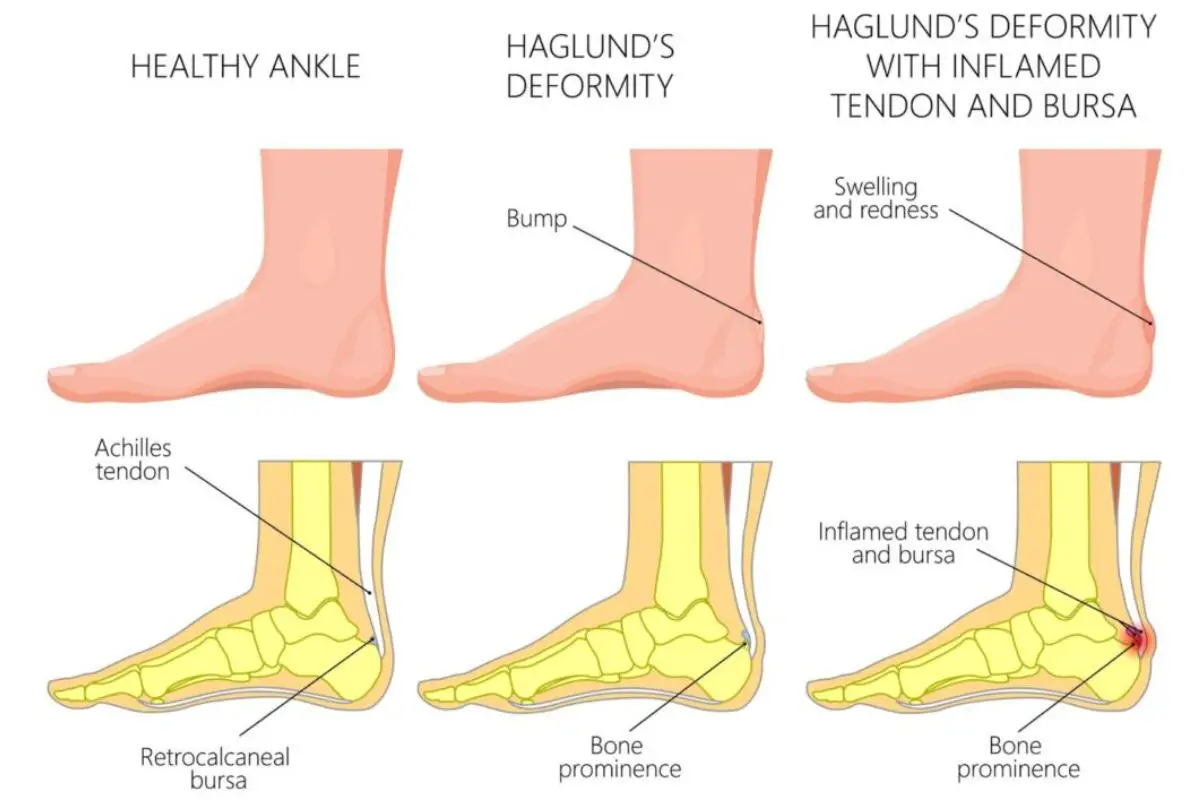
1. Bony Bump on the Heel
This is the hallmark symptom and something you’ll notice first – the prominent, bony bump at the back of your heel. This is why people call it the “pump bump.”
2. Pain
Sadly, Haglund’s deformity is not just an issue of appearance – it often comes with pain and tenderness. The discomfort can be anywhere from mild and annoying to severe, especially if you apply pressure to it.
3. Swelling and Inflammation
If there’s continued friction and pressure between the bony bump and the Achilles tendon, the soft tissues that surround your heel can become swollen and inflamed.
4. Redness and Irritation
The affected area can often become red and irritated because the deformity constantly irritates the Achilles tendon and the soft tissue around it. The skin over the bump can show signs of irritation and it can even thicken.
5. Issues with Shoes
If there’s a bump at the back of your heel, you’re going to have issues with footwear. If you want to find a comfortable pair of shoes, get ready for some struggle, because the shoes that press against the bump will cause quite a lot of discomfort.
6 Ways to Treat Haglund’s Deformity
The term “condition” or, even worse, “deformity” sounds scary to most people, and the first thing you’ll think of if you deal with this is, “Is there a way to make it better?” The short answer – yes, there is.
There are various ways of helping it, so the diagnosis is not the end of the world. It’s definitely something you’ll need to manage, but you can still run with Haglund’s deformity before and during your therapy.
1. Shoes Modification
If there’s a bump sticking at the back of your heel, it only makes sense to look for some shoes that don’t make it worse. Anything with a soft heel or an open back is going to work because it will reduce friction and irritation of the bump.
2. Inserts
You can also look for some additional cushioning and support in the form of orthotic inserts. They can be custom or over-the-counter and may help improve foot mechanics and reduce the symptoms.
3. Physical Therapy
Something you can do to strengthen and stretch the Achilles tendon is to give physical therapy a try. The therapist can teach you exercises that improve flexibility and reduce tension in the heel area.
4. Ice and Anti-Inflammatory Medication
Good old ice can do wonders: it can reduce the swelling and help with the pain. In addition, you can try some over-the-counter anti-inflammatory medication, but make sure you consult your doctor before opting for that.
Subscribe to Our Running Newsletter!
Get free running tips from renowned professional athletes and discounts from top-notch brands.
5. Cortisone Injections
Cortisone injections will provide you with temporary relief, but it’s a recommendation that needs to come from your doctor. It can be of great help, but Cortisone is a serious medication and not for everyone.
6. Surgery
In extreme cases, your doctor will advise you to go in for surgery to remove the bump and address any issues with the Achilles tendon. Don’t worry, you’ll still be able to run after the surgery, but it needs to be done gradually and according to post-operative instructions.
Why It Is Important to Wear the Right Running Shoes for Haglund’s Deformity
Even if you know nothing about this condition and have never experienced it, you probably already came to the conclusion that you need to wear proper soft back shoes to manage the pain and discomfort.
The correct Haglund’s deformity shoes will have enough cushioning and support that can reduce the pressure being put on the affected area and reduce the friction between the shoe and the bump. Physical activity can lead to issues if you’re not wearing proper shoes, and you’ll experience a lot of discomfort if you try to run in something that’s not comfortable, cushioned, and supportive enough.
The right shoes can improve mobility and make your running experience a whole lot easier without the risk of worsening the symptoms.
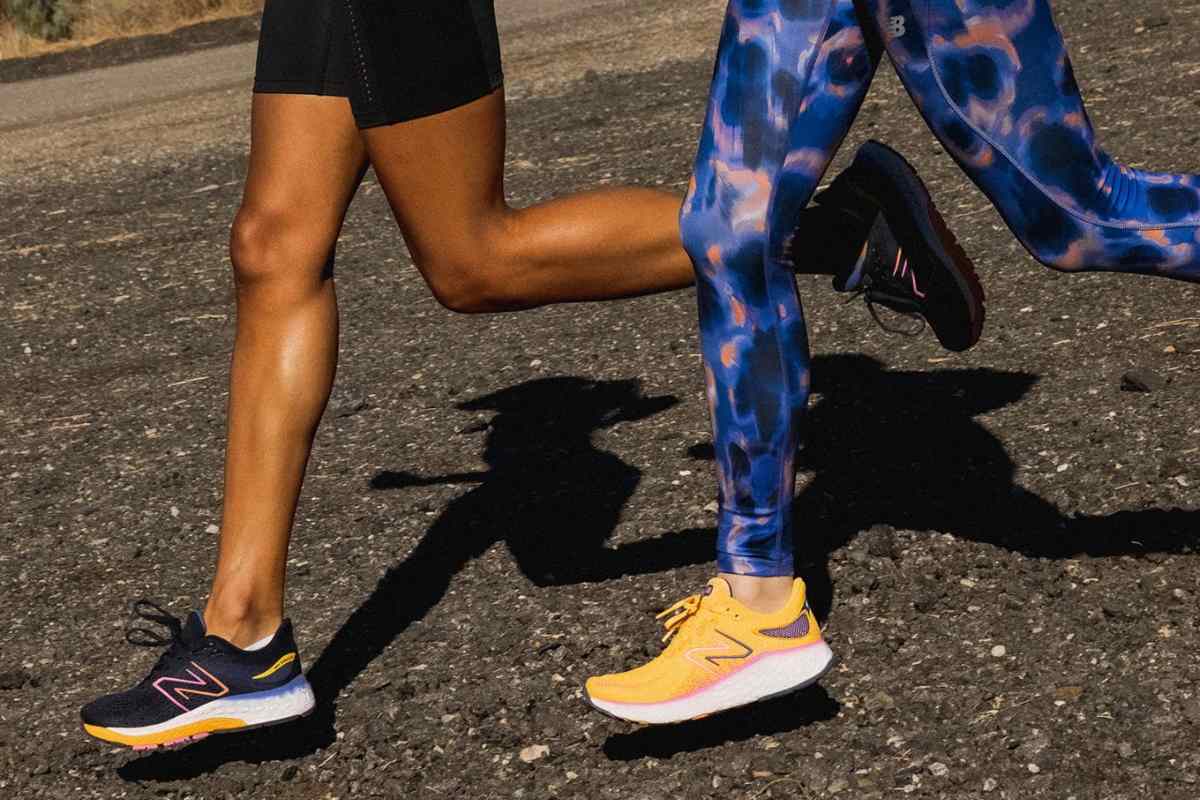
How to Choose the Best Running Shoes for Haglund’s Deformity?
Since there’s so much emphasis on the importance of correct shoes, you must be wondering how to choose them and what to look for. You’re in the right place, because we’ll go over a list of things to keep in mind that will make the process of picking out new shoes a lot easier.
1. Heel Counter
The correct shoes need to be nicely padded and have a cushioned heel counter. These two features play a major part in reducing the friction and pressure on the bump and they’ll make your life easier.
2. Sizing
Regardless of your condition (or even if you don’t have one), you always want your shoes to be the correct size. With Haglund’s deformity, however, the size matters even more, because tightness can worsen the symptoms, whole shoes that are too loose won’t give you enough support.
3. Cushioning
Generous cushioning is a must, as well as good shock absorption, particularly around the heel. This is going to help reduce the impact with each step and the strain on the Achilles tendon and the bump itself.
4. Breathability
Running shoes that have good ventilation will reduce sweating and keep your feet dry. Sweat can irritate the skin, so breathability is not something you should compromise on.
5. Supportive Midsole and Flexibility
The midsole needs to be supportive and flexible at the same time because it will help keep your feet moving properly and reduce the pressure on the bump.
6. Testing
The ultimate test – trying the shoes on. It all comes down to comfort, so the best thing to do is to try the shoes on and see how they feel.
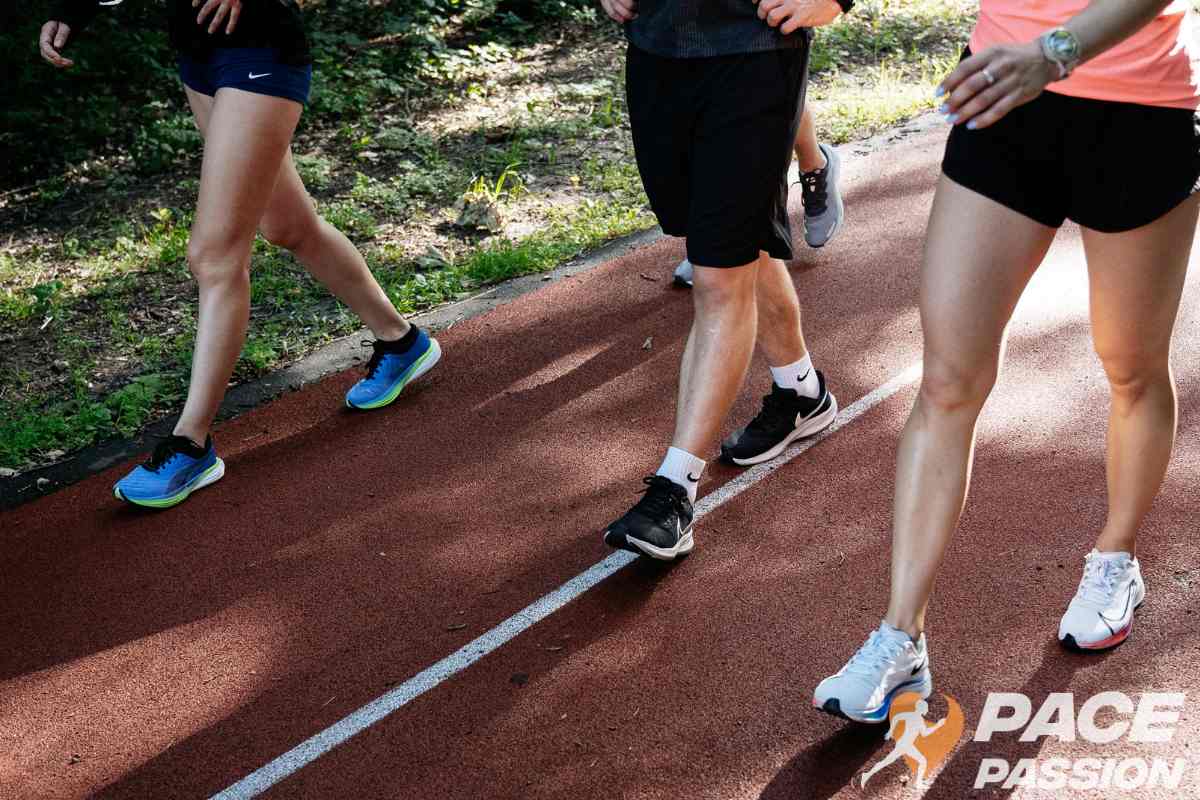
FAQ
What shoes go with Haglund’s deformity?
You want shoes that have a generously padded heel counter, a lot of cushioning, and, of course, they need to be the right size. Flexible and supportive midsole is a must, as well as breathable materials in the upper.
Can you run with Haglund’s deformity?
Yes, running with Haglund’s deformity is possible. However, you need to make sure to wear the correct shoes and manage your running intensity, especially if you feel any pain (in which case it’s best to take a break or stop altogether).
Conclusion
There’s much to be said about shoes that will work with this condition, but I think we said it all! You know what to look out for when it comes to choosing the right shoes, and you know that the New Balance Men's Fresh Foam X 1080 V12 Running Shoe is the best shoe for Haglund’s deformity you can find.
Now it’s your turn! Have you experienced Haglund’s deformity, and if you have, how did you manage it? Do you have any tips for runners dealing with this condition? Which shoes have you found helped the most? How has this condition affected your running routine?
Leave your tips below and let’s help each other deal with this easier!
Running out! (In my New Balance sneakers, of course)
Also Read:
- How Many Steps in Two Miles
- 6K Run in Miles
- Pre Workout Before Running
- What Is a Good 10K Time by Age
- Ruck Running
- Eggs for Running
- Running vs Sprinting
- Benefits of Walking 6 Miles a Day
- Best Running Insoles for Overpronation
References:
- “Achilles Tendinitis,” Mayo Clinic, https://www.mayoclinic.org/diseases-conditions/achilles-tendinitis/symptoms-causes/syc-20369020 (accessed Oct. 16, 2023)
- “Cortisone Shots,” Cleveland Clinic, https://my.clevelandclinic.org/health/treatments/17759-cortisone-shots (accessed Oct. 16, 2023)
- “Haglund’s Deformity”, Cleveland Clinic, https://my.clevelandclinic.org/health/diseases/25134-haglunds-deformity (accessed Oct. 16, 2023)
- “Heel Bursitis”, Cleveland Clinic, https://my.clevelandclinic.org/health/diseases/21706-heel-bursitis (accessed Oct. 16, 2023)
- Hiroyuki Murota, Kosuke Yamaga, Emi Ono, Naoya Murayama, Hiroo Yokozeki, Ichiro Katayama, “Why Does Sweat Lead to the Development of Itch in Atopic Dermatitis?” National Library of Medicine, https://pubmed.ncbi.nlm.nih.gov/31152459/ (accessed Oct. 16, 2023)
- Jennifer Barry, “How to Treat Haglund's Deformity and Other Things You Should Know,” Medical News Today, https://www.medicalnewstoday.com/articles/322432#treatment (accessed Oct. 16, 2023)
Why Trust Us?
Pace Passion is committed to helping runners of all levels find the best product to improve their training and running performance. We use a comprehensive methodology for reviewing running and nutrition products for runners, so we only recommend products that we use ourselves or have had the opportunity to test. Read more about product testing here. Learn more about us here.
If you have any questions or suggestions, you can contact us via email – [email protected]

